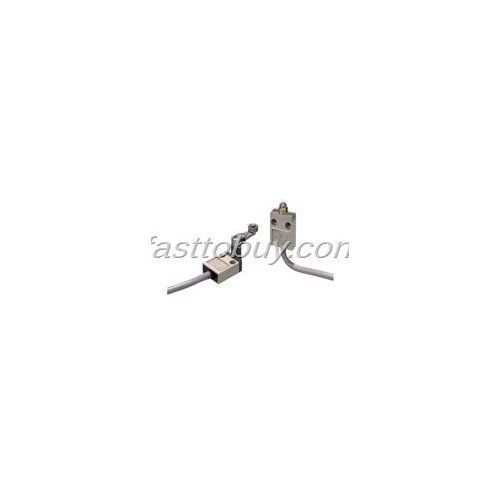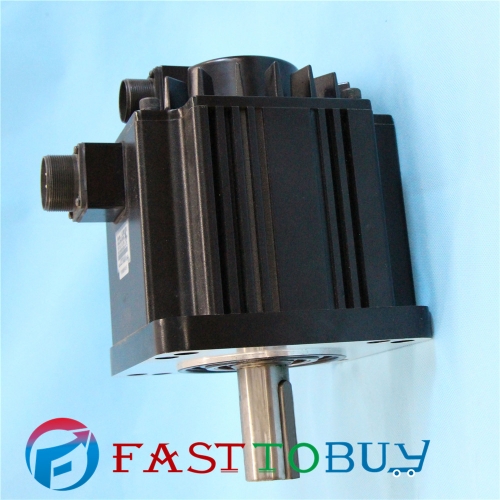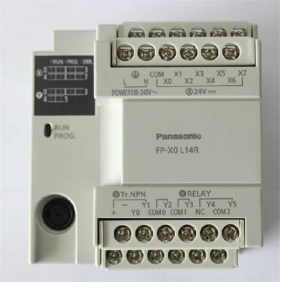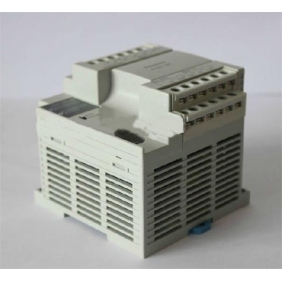| No comment |
Your Position: Home
> Control System > PLC > Panasonic PLC > FP-X0 L14R AFPX0L14R Panasonic PLC 100-240VDC DC input 8 points Relay output 4 points FP-X0 Control Unit Original NewCategories
View History
FP-X0 L14R AFPX0L14R Panasonic PLC 100-240VDC DC input 8 points Relay output 4 points FP-X0 Control Unit Original New
Description
FP-X0 L14R AFPX0L14R Panasonic PLC 100-240VDC DC input 8 points Relay output 4 points FP-X0 Control Unit Original New
Feature
Super-high Processing SpeedSuper-high speed of 80 ns/step for 0 to 3000 steps (ST command).
580 ns/step processing speed for 3001 steps or more (Only for L40 and L60).
Program MemoryL14 and L30: 2.5 k steps
L40 and L60: 8 k steps
One control unit can be connected with up to 3 expansion units. Therefore, the maximum number can reach 150 points.
In addition, if the expansion FP0 adaptor is used, the maximum number can reach 216 points when the FP0R expansion unit is used. (Only for L40R, L40MR, L60R and L60MR)
Performance specifications
Items | Specifications | |||||||
L14R | L30R | L40R | L40MR | L60R | L60MR | |||
Controllable I/O points | Control unit | DC input | DC input | DC input 24 points, | DC input 32 points, | |||
When using FP-X E16 | - | - | 88 points max. | 108 points max. | ||||
When using FP-X E30 | - | - | 130 points max. | 150 points max. | ||||
When using FP0R | - | - | 196 points max. | 216 points max. | ||||
Programming method/Control method | Relay symbol/Cyclic operation | |||||||
Program memory | Built-in Flash-ROM (Free of backup battery) | |||||||
Program capacity | 2.5 k steps | 8 k steps | ||||||
No of | Basic commands | Approx. 114 kinds | ||||||
High-level commands | Approx. 230 kinds | |||||||
Processing speed | 0.08 µs/step for basic | 3 k steps: 0.08 µs/step for basic commands, 0.32 µs | ||||||
I/O refreshing + basic time | Basic time | 0.15 ms or less | 0.18 ms or less | 0.31 to 0.35 ms or less | 0.34 to 0.39 ms or less | |||
| When using E16: 0.4 ms × No. of units | |||||||
Memory for processing | Relays | External input (X) (Note 1) | 960 points | 1760 points | ||||
External output (Y) (Note 1) | 960 points | 1760 points | ||||||
Internal relay (R) | 1008 points | 4096 points | ||||||
Special internal relay (R) | 224 points | |||||||
Timer Counter (T/C) | 256 points (Note 2) | 1024 points (Note 2) | ||||||
Timer: (1 ms, 10 ms, 100 ms, 1 s)× 32767, Counter: 1 to 32767 | ||||||||
Link relay (L) | No | 2048 points | ||||||
Memory area | Data register (DT) | 2500 words | 8192 words | |||||
Special data register (DT) | 420 words | |||||||
Link data register (LD) | No | 256 words | ||||||
File registration (FL) | No | |||||||
Index register (I) | 14 words (IO to ID) | |||||||
Differential points | Equivalent to program capacity | |||||||
Master control relay (MCR) | 32 points | 256 points | ||||||
Label number (JP+LOOP) | 100 points | 256 points | ||||||
No. of step programs | 128 (Engineering) | 1000 (Engineering) | ||||||
No. of subroutines | 100 | 500 | ||||||
No. of interrupt programs | Input: 8 programs, timing: 1 program | |||||||
Sampling trace | No | Yes | ||||||
Comments storage | All of the I/O comments,explanations and block comments can | |||||||
PLC link function | No | Yes | ||||||
Constant scan | In unit of 0.5 ms: 0.5 ms to 600 ms | |||||||
Password | Available (4 or 8 digits) | |||||||
Upload protection | Available | |||||||
Self-diagnosis function | Checks of the watchdog timer and the program syntax | |||||||
Program editting during | Available (Capacity modified simultaneously: 128 steps) | Available (Capacity modified simultaneously: 512 steps) | ||||||
Downloading during Run | Available | |||||||
High-speed | Body input | 1-phase, 4-channel | 1-phase, 4-channel (50 kHz max.) | |||||
Pulse output/ | Body output | Pulse: | Pulse: | Pulse: 2-channel (50 kHz) | ||||
Pulse catch input/ | 8 points | |||||||
Analog input | No | 2-channel (For inputting any of the | ||||||
Potentiometer input | ||||||||
Thermistor input | ||||||||
Voltage input | ||||||||
Calendar/clock | No | Yes | ||||||
Flash ROM | Backup made | Data memory | Data memory | |||||
Automatic | Counter: 6 points | Counter: 16 points (C1008 to C1023) | ||||||
Backup battery | No | Yes (Backup lasting for the whole process) | ||||||
RS485 communication port | No | Yes | No | Yes | ||||
Note 1) The actual usable points depend on the combination of the hardware.
Note 2) The points of the timer can be added as required.
Note 3) The rated voltage is 24 V DC at 250C. The frequency may fall according to the changes of the voltage, temperature and operating conditions.
Note 4) The maximum frequency may vary with the difference of the operating method.
Note 5) The allowable writing operation is within 10000 times. Areas to be held and not held can be specified using the system registers.
Dimension Figure
FP-X0 L14R AFPX0L14R Panasonic PLC 100-240VDC DC input 8 points Relay output 4 points FP-X0 Control Unit Original New
Feature
Super-high Processing SpeedSuper-high speed of 80 ns/step for 0 to 3000 steps (ST command).
580 ns/step processing speed for 3001 steps or more (Only for L40 and L60).
Program MemoryL14 and L30: 2.5 k steps
The Maximum Number of I/O Points
L40 and L60: 8 k stepsOne control unit can be connected with up to 3 expansion units. Therefore, the maximum number can reach 150 points.
In addition, if the expansion FP0 adaptor is used, the maximum number can reach 216 points when the FP0R expansion unit is used. (Only for L40R, L40MR, L60R and L60MR)Performance specifications
Items
Specifications
L14R
L30R
L40R
L40MR
L60R
L60MR
Controllable I/O points
Control unit
DC input
8 points,
Relay
output
4 points,
Transistor
output
2 pointsDC input
16 points,
Relay
output
10 points,
Transistor
output
4 pointsDC input 24 points,
Relay output 12
points,
Transistor output 4
pointsDC input 32 points,
Relay output 24
points,
Transistor output 4
pointsWhen using FP-X E16
expansion I/O units-
-
88 points max.
(3 expansion units
max.)108 points max.
When using FP-X E30
expansion I/O units-
-
130 points max.
(3 expansion units
max.)150 points max.
(3 expansion units
max.)When using FP0R
expansion units-
-
196 points max.
(3 expansion units
max.)216 points max.
(3 expansion units
max.)Programming method/Control method
Relay symbol/Cyclic operation
Program memory
Built-in Flash-ROM (Free of backup battery)
Program capacity
2.5 k steps
8 k steps
No of
instructionBasic commands
Approx. 114 kinds
High-level commands
Approx. 230 kinds
Processing speed
0.08 µs/step for basic
commands
0.32 µs for high-level
commands
(MV commands)3 k steps: 0.08 µs/step for basic commands, 0.32 µs
for high-level commands(MV commands)
After 3 k steps: 0.58 µs/step for basic commands,
1.62 µs for high-level commands(MV
commands)I/O refreshing + basic time
Basic time
0.15 ms or less
0.18 ms or less
0.31 to 0.35 ms or less
0.34 to 0.39 ms or less
When using E16: 0.4 ms × No. of units
When using E30: 0.5 ms × No. of units
When using FP0 expansion adaptors: 1.4 ms + the refreshing
time of the FP0 expansion unitMemory for processing
Relays
External input (X) (Note 1)
960 points
1760 points
External output (Y) (Note 1)
960 points
1760 points
Internal relay (R)
1008 points
4096 points
Special internal relay (R)
224 points
Timer Counter (T/C)
256 points (Note 2)
1024 points (Note 2)
Timer: (1 ms, 10 ms, 100 ms, 1 s)× 32767, Counter: 1 to 32767
Link relay (L)
No
2048 points
Memory area
Data register (DT)
2500 words
8192 words
Special data register (DT)
420 words
Link data register (LD)
No
256 words
File registration (FL)
No
Index register (I)
14 words (IO to ID)
Differential points
Equivalent to program capacity
Master control relay (MCR)
32 points
256 points
Label number (JP+LOOP)
100 points
256 points
No. of step programs
128 (Engineering)
1000 (Engineering)
No. of subroutines
100
500
No. of interrupt programs
Input: 8 programs, timing: 1 program
Sampling trace
No
Yes
Comments storage
All of the I/O comments,explanations and block comments can
be saved.(Free of backup battery, 328 k bytes)PLC link function
No
Yes
Constant scan
In unit of 0.5 ms: 0.5 ms to 600 ms
Password
Available (4 or 8 digits)
Upload protection
Available
Self-diagnosis function
Checks of the watchdog timer and the program syntax
Program editting during
RunAvailable (Capacity modified simultaneously: 128 steps)
But comments cannot be modified during the process.Available (Capacity modified simultaneously: 512 steps)
But comments can be modified during the process.Downloading during Run
Available
High-speed
counter
(Note 3) (Note 4)Body input
1-phase, 4-channel
(20 kHz max.)
and 2-phase, 2-channel
(20 kHz max.)1-phase, 4-channel (50 kHz max.)
and
2-phase, 2-channel (20 kHz max.)Pulse output/
PWM output
(Note 3) (Note 4)Body output
Pulse:
1-channel
(20 kHz max.)
PWM:
1-channel
(1.6 kHz max.)Pulse:
2-channel
(20 kHz max.)
PWM:
2-channel
(1.6 kHz max.)Pulse: 2-channel (50 kHz)
PWM: 2-channel(3.0 kHz max.)Pulse catch input/
Interrupt program8 points
(High-speed counting and interrupt input included)Analog input
No
2-channel (For inputting any of the
following items in each channel)Potentiometer input
Min. resistance value of potentiometer:
5 kΩ
10-bit resolution (K0 to K1000)
Accuracy ± 1.0% F.S.+ accuracy of
external reistorsThermistor input
For inputting the resistance value of the
thermistor
(Min. resistance value of external
thermistors + external resistance value
> 2 kΩ)
10-bit resolution (K0 to K1023)
Accuracy ± 1.0% F.S.+ accuracy of
external thermistorsVoltage input
Absolute max. input voltage: 10 V
10-bit resolution (K0 to K1023)
Accuracy ± 2.5% F.S.(F.S. = 10 V)Calendar/clock
No
Yes
Flash ROM
backup
(Note 5)Backup made
according to
commands of
F12 and P13Data memory
(2500 words)Data memory
(8192 words)Automatic
backup when
power OFFCounter: 6 points
(C250 to C255)
Process value of the
counter: 6 points
(EV250 to EV255)
Internal relays: 5 points
(WR58 to WR62)
Data memory: 300 words
(DT2200 to DT2499)Counter: 16 points (C1008 to C1023)
Process value of the counter: 16 points
(EV1008 to EV1023)
Internal relays: 8 points
(WR248 to WR255)
Data memory: 302 words
(DT7890 to DT8191)Backup battery
No
Yes (Backup lasting for the whole process)
RS485 communication port
No
Yes
No
Yes
Note 1) The actual usable points depend on the combination of the hardware.
Note 2) The points of the timer can be added as required.
Note 3) The rated voltage is 24 V DC at 250C. The frequency may fall according to the changes of the voltage, temperature and operating conditions.
Note 4) The maximum frequency may vary with the difference of the operating method.
Note 5) The allowable writing operation is within 10000 times. Areas to be held and not held can be specified using the system registers.Dimension Figure

















